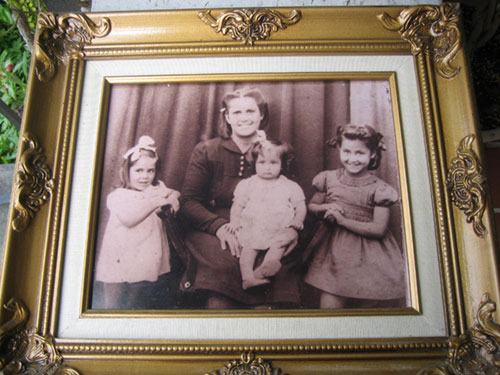
There was a time when the Santa Clara Valley was primarily Portuguese. The 1880’s saw such an influx of immigrants from Portugal that by the First World War, they constituted 70 percent of the city’s population. By the 1940s, Santa Clara accounted for nearly one third of the entire state’s Portuguese presence.
World War II transformed the Bay Area, bringing new industries and an influx of GIs who decided to settle permanently in the area, changing the ethnic mix of the city, according to former Police Chief Frank Sapena and Assistant Chief Clarence Andrade in a story in the 1968 Santa Clara Journal.
But the passing of longtime Santa Claran Silvina Costa late last year at the age of 95 brings to mind another reason Portuguese came to Santa Clara.
In the late 1950s and 1960s, a series of earthquakes and volcanic eruptions on the island of Faial, Azores were so intense that they briefly created a new island, later swallowed up by the sea. In response to human need, Congress passed a special act – one of its sponsors was then-Senator John F. Kennedy – authorizing non-quota visas for displaced Portuguese citizens. Called the Azorean Refugees Acts, these were extended through June 1962, and almost 5,000 Portuguese came to the United States.
One of those families was that of lifelong Santa Claran Bernadette DeSouza, Costa’s daughter. Costa, who came from a background of acute poverty, came to the U.S. with three children – one of whom was DeSouza – to join her husband who came several years before. “We didn’t know our father hardly,” says DeSouza. “She would write him letters and ask ‘send a dollar.'” The couple had three more children in the U.S.
“The moment she [Costa] got off the plane and saw the abundance of everything here, she always loved this country because she didn’t have to scrape to survive,” says DeSouza. But being here entailed personal sacrifice too. “My mother left her parents knowing she probably wouldn’t see them again. She never saw or heard their voices again.”
“When we came to the U.S., I had an aunt here who recognized the dress my sister Julie had on,” continues DeSouza. “It was made from a pair of men’s pajamas and she recognized the decoration on the pocket” for its distinctive embroidery – Costa’s ill-paid work in her Azores life. Costa marked her American declaration of independence by refusing to embroider again – summer work in the canneries that once dominated Santa Clara looked better to her. DeSouza’s farther worked for Mission Trail Garbage Company and DeSouza babysat her younger brothers and sisters.
She remembers a rhythm of life determined by growing and harvesting seasons. “After the harvest, our parents would go get leftovers from the orchards. I sat and pared them all day, put them in a pot and canned them.”
DeSouza has another memory of those early years. “The first Christmas we were here we didn’t have a Christmas tree. I remember getting a branch from a tree, and we decorated that branch with handmade ornaments made from whatever we had.”
In 1965, the family bought their first house, kitty-corner from the old Buck Shaw stadium at Liberty and Sherman Streets. When Santa Clara University bought the property in 1980, the Costas moved to the same house Silvina Costa occupied until her death.
Life wasn’t all work. On Sundays the family “would pile into the family car, a Studebaker,” DeSouza recalls. “We’d go to Santa Cruz and wouldn’t come back until dark. We went to Alum Rock Park, San Francisco Zoo, Monterey.”
But the Costas never lost their old-world thrift. “We would never stop and eat anywhere – we couldn’t afford that,” remembers DeSouza. But her mother packed a lunch that far surpassed typical roadside fare – sandwiches, tangy olives, freshly baked French bread, pungent Portuguese cheeses.
Martins Beach was another family favorite. “If we went to the beach,” sister Connie Costa remembers. “My mother brought her cast iron frying pan. My father would catch smelt, and my mother would clean them and cook them right there on the beach.”
The Sociedade do Espírito Santo Hall events were central in Portuguese life in Santa Clara then as it is today. “Events there were many of our outings. The children in the Portuguese Band all called Silvina ‘grandma,'” says DeSouza. Recently, DeSouza’s youngest granddaughter was a Festival Queen – Festa Rainha – at the festival of Our Lady of Fatima, one of four the S.E.S. holds throughout the year.
When she died in 2013, Silvina Costa left a very different Santa Clara Valley than the one she had come to more than a half-century before. The Azorean Refugees Acts that brought Costa have spilled down to the present in her six children, 12 grandchildren, 23 great-grandchildren, and 13 great-great grandchildren, most of whom still live in the area.
“All of her sons- and daughters-in-law didn’t just marry a person,” says DeSouza. “They married a family.” And they married a bigger story of Santa Clara’s history.





